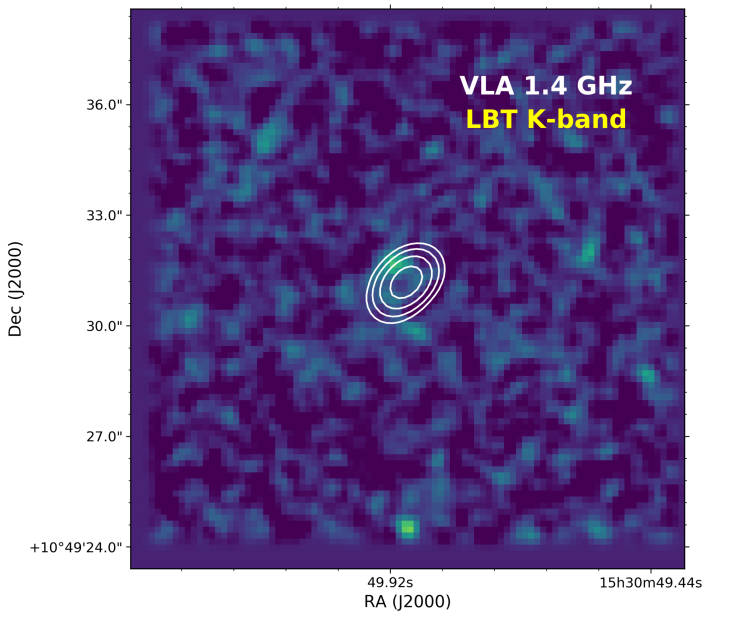Most Distant Radio Galaxy Discovered 12 Billion Light-Years Away From Earth

Nearly 13.8 billion years ago, a cosmic event called the Big Bang brought our universe into existence. It started off as a tiny pinprick and has only been growing since then, hosting innumerable galaxies, stars, black holes, and planets.
Today, the universe has grown so big that it is difficult to comprehend its dynamics. It is still expanding at a rapid rate, something that has prompted scientists across the globe to locate distant objects from the early universe and understand how it has been evolving. One such effort has led to the discovery of most distant radio galaxy in the observable universe.
From distant space objects, light can take millions or even billions of years to reach us. Meaning, the objects we are seeing right now are actually what or how they appeared several billion years ago. This acts as a way to look back in time and explore galaxies, stars, and black holes from different phases of the universe’s life.
Due to the massive distances involved, the farther we move towards a young universe, the amount of viable data decreases. However, in this particular case, an international team of astronomers spotted a radio galaxy sitting some 12 billion light-years away from Earth or at a time when the universe was merely 7 percent of its current age.
Radio galaxies are some of the most distinct active galaxies in the visible universe. They appear very luminous at radio wavelength due to the presence of supermassive black holes at their centers.
As the researchers described, the black holes sitting in these galaxies accrete gas and dust from their proximity and give away powerful jet streams. These high-energy jets accelerate charged particles present in the colossal galaxy and produce a radio emission, which astronomers are able to detect — just like in this case.
The team, which included astronomers from the Netherlands, Brazil, the United Kingdom, and Italy, spotted the radio galaxy type emission while taking observations from the Giant Meter Wave Radio Telescope (GMRT) in India.
Follow-up observations from the Gemini Telescope in Hawaii and the Large Binocular Telescope in Arizona confirmed the redshift the galaxy — the shift in radiation towards the longer, redder end of the spectrum — and helped the team confirm its distance.
Till date, scientists thought radio galaxies formed much later in the universe’s existence, but this early universe discovery came as a major surprise. At a distance of 12 billion light-years from Earth, this galaxy was the farthest one to be seen in the known universe.
"It is very surprising that these galaxies have built their mass in such a short period of time,” Aayush Saxena, the first author of the work from Leiden Observatory, said in a statement.
The find, as the researchers explained, breaks a 19-year-old record. But more importantly, it is helping researchers understand the birth and evolution of primordial galaxies and black holes of the universe.
"Bright radio galaxies harbor super-massive black holes,” study co-author Huub Röttgering added. “It is amazing to find such objects as early in the history of the Universe: the time for these supermassive black holes to form and grow must have been very short." Black holes are known to drive the growth of galaxies and the team believes understanding their early dynamics by peering deeper into the cosmos could be the key to gain more insight galactic evolution.
© Copyright IBTimes 2024. All rights reserved.





















